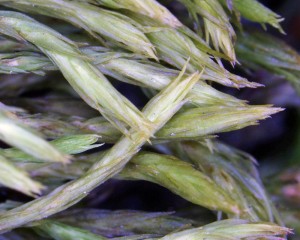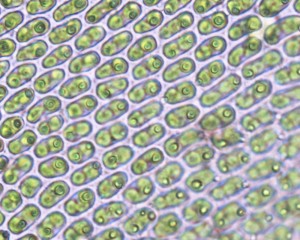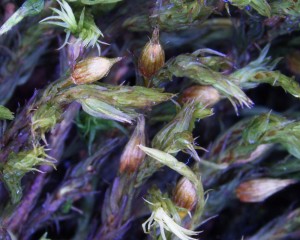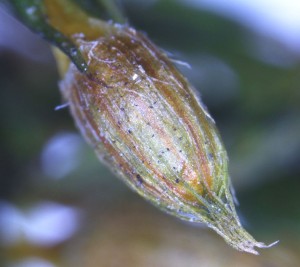Habitat
Orthotrichum lyellii may typically be found on the coast growing epiphytically on deciduous trees, such as alder, maple, oak and spruce (). Orthotrichum lyellii is less commonly found on rock and coniferous trees, such as hemlock, yew, and Yellow Cedar ().
Gametophyte
Overall Structure:
Orthotrichum lyellii is a moderately robust acrocarpous moss that forms open green or yellow-green tufts.
Leaf Structure:
Leaves are characteristically long-lanceolate, with a single costa. Note the narrow apices.
The lamina of the leaf is somewhat pleated.
The laminal cells are papillose.
Asexual Reproduction
Gemmae:
Gemmae are occasionally found among leaves.
Sporophyte
Sporophytes generally reach maturity in the spring. They are brown when mature.
Sporangium:
The calyptra has small hairs pointing towards the apex.
The sporangia are barely emergent from the surrounding perichaetchial leaves.
Mature sporangia are ribbed and the exostome teeth are whitish.
Comments:
Among the large Orthotrichum that occur in the Vancouver area, this species is by far the most common and abundant (S. Joya, personal observation). Within that area, the species most likely to be confused with it are O. affine, O. speciosum and O. striatum, all of which are relatively common (S. Joya, personal observation).









